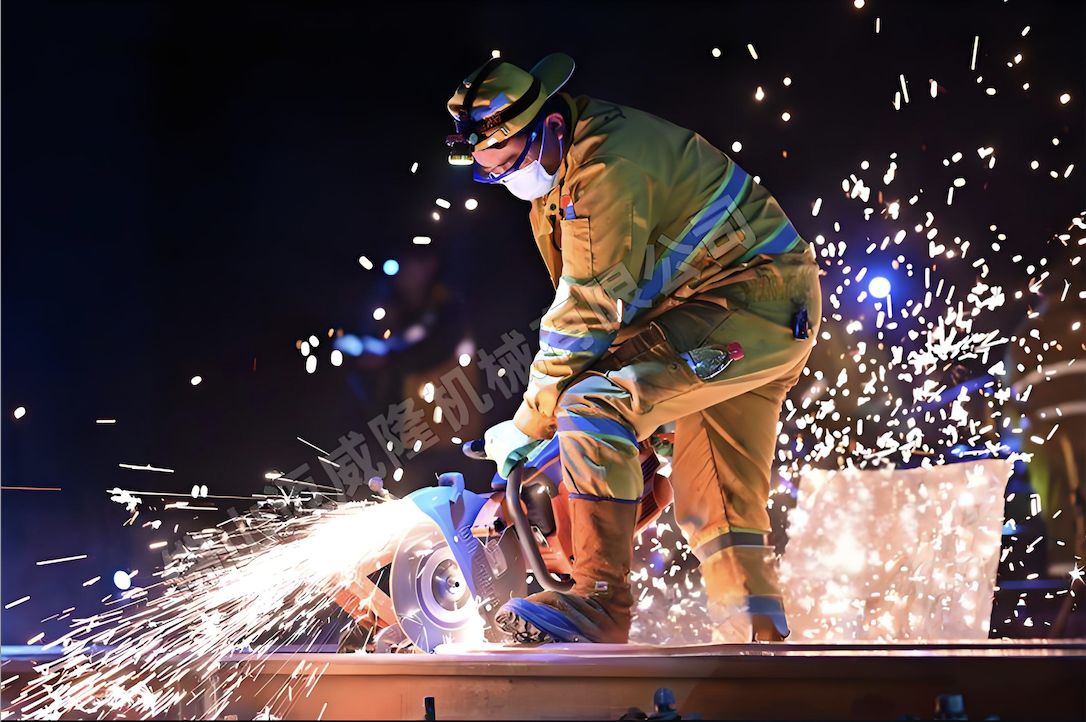
BLOGS
Introduction to the Classification of Cutting Discs
Jul 16,2025

Introduction to the Classification of Cutting Discs
Cutting discs are essential abrasives used in a variety of industrial applications. These discs are porous structures created by bonding abrasives with binders, followed by drying and baking. The characteristics of cutting discs can vary greatly depending on the abrasives, binders, and manufacturing processes used. This variability significantly influences the processing quality, productivity, and cost-effectiveness of the cutting operation. The properties of cutting discs are mainly determined by factors such as abrasives, particle size, binders, hardness, structure, shape, and size.
Composition of Cutting Discs
A cutting disc is composed of three key components: abrasives, binders (binding agents), and pores:
Abrasive: The primary grinding component of the cutting disc, consisting of sharp cutting edges that process the workpiece. Abrasives are typically very hard materials, often compounds. Common examples include corundum (aluminum oxide), silicon carbide, diamond, and cubic boron nitride. The most common abrasives used in cutting discs are corundum and silicon carbide.
Binder: Binders vary based on the intended use of the cutting disc. They can be ceramic, resin, rubber, or metal, and their primary function is to hold the abrasives together, forming the disc with a specific shape.
Porosity: The porosity of a cutting disc is crucial, as it helps reduce the bonding strength of the binder and stores the grinding debris. Once the sharp abrasive particles wear down, the pores help maintain the cutting efficiency by allowing new sharp edges to emerge.
Types of Cutting Discs
Cutting discs are critical in the cutting process, and they are made from a mix of abrasives and binders, which are pressed, dried, and sintered together in the right proportions. These discs consist primarily of abrasives, binders, and gaps that provide specific characteristics based on the cutting task. Abrasives must withstand strong friction, compression, and high temperatures during use. Therefore, the performance and composition of the abrasives are crucial, especially in high-hardness applications where the cutting disc must outperform the workpiece.
Cutting discs can generally be categorized into three main types based on their abrasives:
Corundum Cutting Discs: The main component of corundum is aluminum oxide. These discs are ideal for cutting materials with high tensile strength and hardness, such as various types of steel. Corundum cutting discs can be further subdivided into brown corundum, white corundum, chrome corundum, single crystal corundum, and microcrystalline corundum, each offering specific cutting properties. Brown and white corundum are widely used for their excellent cutting performance and durability.
Carbide Cutting Discs: Carbides are divided into black silicon carbide and green silicon carbide, each offering distinct cutting properties. Black silicon carbide is often used for cutting non-ferrous metals, while green silicon carbide is used for more precise cutting and offers superior toughness, making it ideal for harder materials.
Super-Hard Abrasive Cutting Discs: Super-hard abrasives are advanced materials developed in recent years, and these include artificial diamond and cubic boron nitride (CBN). Artificial diamond is made from graphite and features sharp cutting edges with outstanding cutting performance. Though expensive, it is ideal for cutting high-hardness materials such as hard alloys and optical glass. Cubic boron nitride (CBN), while slightly less hard than diamond, offers excellent grinding performance, stable thermochemical properties, and high grinding efficiency. These are widely used in industries requiring high-precision cutting, such as aerospace and high-tech manufacturing.
Conclusion
Cutting discs play a crucial role in a variety of industries, from metalworking to precision applications. The selection of the right abrasive and disc type depends on the material being cut, the required precision, and the working environment. By understanding the composition and types of cutting discs available, manufacturers can select the most appropriate products for their cutting needs, improving efficiency and performance while minimizing wear and costs.
RELATED NEWS
High-Performance, Long-Lasting Flap Disc for Metal Grinding, Blending, Finishing, and Surface Polishing Applications
Flap discs are abrasive tools for grinding, blending, and finishing metal, offering long life, smooth finishes, and efficient material removal.
Stricter Environmental Regulations Usher in a Green Revolution in the Cutting Disc Industry
By 2028, the penetration rate of environmentally friendly cutting discs is expected to surpass 60%, marking the arrival of a refined, professional, and sustainable new era for the industry.
Abrasive Wheels Enter the Age of Intelligence: Driving a 300% Boost in Automated Cutting Efficiency
From semiconductors to structural steel, from medical implants to solar panels, intelligent grinding wheels are no longer silent contributors—but vital agents of a smarter, faster, and more sustainable future.
Nanodiamond and Composite Bonding Technology Usher in a New Era of Cutting Disc Performance
With nanodiamond abrasives, intelligent sensors, and green binder systems, the future of cutting is sharper, smarter, and more sustainable than ever before.
Grinding Wheel Flap Discs Company
Grinding wheel flap discs are versatile abrasives. They feature multiple overlapping flaps that offer consistent grinding performance. Ideal for various materials like metal, wood, and stone, these discs can efficiently remove rust, burrs, and old paint.
Cutting Disc Industry Report 2025: A New Era of Precision, Efficiency, and Sustainability
JKINGS, as an emerging force, is committed to pioneering smart manufacturing, ultra-thin disc innovation, and sustainable production—aiming to become a global benchmark in next-generation cutting solutions.


